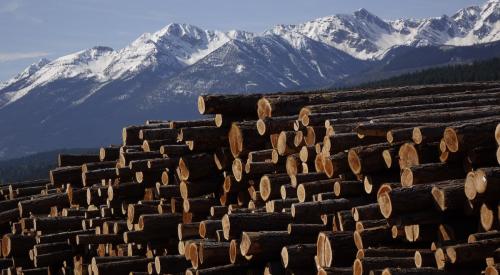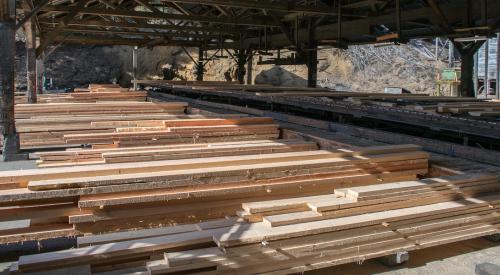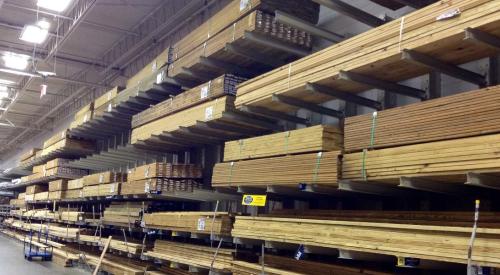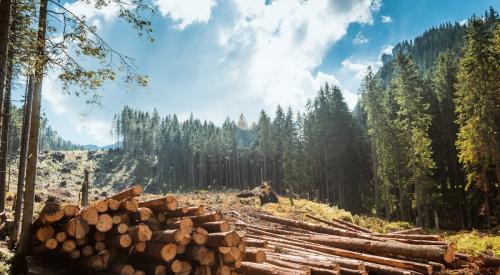Here we go again. The recent decision by the U.S. Commerce Department to impose a 19.3% countervailing duty on Canadian softwood lumber imports (except those from Canada’s four Maritime provinces) seems to ensure that we’ll see another extended period of price spikes and volatility in the critical material component of home building.
It couldn’t come at a worse time. In recent months, home building has been a singular bright spot in the U.S. economy. (Housing and related industries account for nearly 5% of U.S. gross national product.)
NAHB economist Michael Carliner estimates that the 19.3% countervailing duty will add $1,000 to the price of an average American new home. If anti-dumping duties are also approved, that impact could go much higher - pricing as many as a million young Americans out of the market for entry-level homes and dampening demand across all price levels. This seems to make very little sense in an economy struggling to stay out of recession.
Federal Reserve chairman Alan Greenspan seemed to agree with that assessment in recent testimony before the Senate Finance Committee. Without specifically citing Canadian lumber, Greenspan expressed concern that slowing economic growth could spawn protectionist measures in the form of countervailing and anti-dumping suits that are "unwise and surely self-defeating."
"These forms of protection have often been imposed under the label of promoting ‘fair trade,’ but oftentimes they are just simple guises for inhibiting competition," Greenspan said.
History Lesson
For 20 years, the American housing industry has battled a group of domestic lumber producers - the Coalition for Fair Lumber Imports - over the wisdom of maintaining protectionist trade barriers to the entry of Canadian lumber. For the past four years, an uneasy peace prevailed under the compromise Softwood Lumber Agreement, which imposed quotas and tariff controls, Byzantine in complexity, on Canadian imports of softwood lumber - the prime material used by American builders to frame houses. About 34% of the lumber consumed in the United States last year came from Canada. Canadian lumber imports grew by 37% from 1989 to 2000 as many American public lands were withdrawn from lumber production because of environmental issues. The Softwood Lumber Agreement expired last spring.
The CFLI immediately filed for a countervailing duty of 40% and an anti-dumping tariff of 38%. The Commerce Department ruling last month is the first official response. A preliminary ruling on the anti-dumping request is expected later this month and final rulings around Christmas. Lumber consumer groups, led by the NAHB, remain hopeful that all duties on Canadian lumber will be overturned once the measures go through the full administrative and judicial process. They argue that lumber should be traded freely under the North American Free Trade Agreement and that tariffs on Canadian lumber unfairly increase the price of housing to American families seeking homeownership.
The CFLI argues that Canadian producers are subsidized by their governments, creating a competitive advantage. They point out that British Columbia producers, responsible for 50% of Canada’s softwood exports to the United States, harvest lumber almost exclusively from "crown lands" owned by the province.
"It is important to note that U.S. trade law sets a very high standard for such cases to be dismissed at this preliminary stage," NAHB president Bruce Smith says. "While we are disappointed with this outcome, it was not unanticipated. There have been three previous countervailing duty cases on this issue, and in each case in which it was taken to a final decision, it was ultimately determined that the Canadian government did not provide unfair subsidies to its lumber industry."
But while the Bush administration grinds gears deliberating the case, the battle rages on in the halls of government in Washington, Ottawa and Victoria, British Columbia, in international trade tribunals such as the World Trade Organization, and in the court of public opinion in national and international media.
The United States is taking a beating on the issue in local and national Canadian media because whole populations of mill towns in British Columbia have been thrown out of work. The resulting public outcry creates enormous political pressure on the governments of Canada and British Columbia to find a solution fast.
That could work against the interests of American home builders and other lumber consumers, who would like to see this case go all the way through the administrative and judicial process - because they believe they can win - rather than end in a negotiated compromise, as it did in 1996 when the British Columbia government caved in on the Softwood Lumber Agreement in back-room deal-making with the CFLI.
To encourage Canadians to keep the faith, Mississippi builder Bobby Rayburn, vice president/secretary of the NAHB, and Florida builder Barry Rutenberg, chairman of the NAHB’s Building Materials Task Force, led a delegation of lumber consumers to British Columbia in late August. They met with British Columbia Premier Gordon Campbell and were even introduced at a session of the province’s Legislative Assembly (where they received a two-minute standing ovation).
|
|||||||||||||||||||||||||||||||||||||||||||||||||||||||||||||||||||||||||||||||||
|
One-third of the softwood lumber used in the United States comes from Canada. The impact of a pending 19.3% countervailing duty on much of that would likely mean sharply higher costs for builders.
|
|||||||||||||||||||||||||||||||||||||||||||||||||||||||||||||||||||||||||||||||||
Linking Energy to Lumber?
That same week, Pierre Pettigrew, Canada’s minister for international trade, chose Edmonton, Alberta - center of Canada’s oil and gas industry - as the not-so-subtle location for an announcement that Canada plans to take the softwood lumber case to the WTO and ask for a fast-track decision. There’s an implication that Canada might link lumber and energy export issues in future negotiations with the United States.
Another Canadian cabinet minister, Herb Dhaliwal (fisheries), who also represents a British Columbia district in Ottawa, stated publicly that the United States can’t expect Canadian cooperation on a planned natural gas pipeline from Alaska to the lower 48 states if it continues to restrict Canadian lumber imports. "If the Americans don’t want to buy our lumber, I don’t know if we want to let them pump natural gas from Alaska," Dhaliwal said.
The politics of this issue have changed dramatically since 1996, when British Columbia had a far-left New Democratic Party government in power in Victoria, with little clout in Ottawa, where Prime Minister Jean Chretien’s Liberals rule. Last May, Campbell’s Liberals won a landslide victory in British Columbia, establishing a toehold for a Chretien ally in western Canada, which has always been hostile territory for the Liberals. So Chretien has motivation to support British Columbia much more strongly today than in 1996.
Meanwhile, the CFLI has suffered major defections. "Louisiana-Pacific, which has operations on both sides of the border, dropped out of CFLI, along with Georgia-Pacific," Rutenberg says. "Weyerhaueser now claims neutrality on the issue." (Weyerhaueser has a huge stake in the British Columbia forest industry through its acquisition of longtime Canadian giant MacMillan Bloedel.)
Encouraging as all that seems for American home builders, the fact remains that the majority of the pain is in those British Columbia towns where the local mill is the major employer. "This is getting huge media play in Canada," Rutenberg says. "It’s front-page news every day in Toronto as well as Vancouver. The Canadians are putting a lot of political capital into this issue. Already, there are 14,000 people out of work in B.C. We don’t know where that will lead them."
The British Columbia government is finally discussing a move to market-based stumpage fees, which would be a major concession to the historic position of the CFLI. "There’s some speculation that when that happens, Canadian softwood lumber prices may go down rather than up," Rutenberg says. "It will be interesting to see what the CFLI comes up with to oppose free trade if that stumpage rate issue goes away."
While all of this plays out over the next several months, it’s difficult to predict what will happen to the price that builders pay for framing lumber. "If I knew that, I’d be working in the futures market, not building houses," Rutenberg says. "The problem with trying to predict it is that we don’t know what the demand will be. Normally, lumber prices drop a little in the winter because fewer houses are built in cold-climate markets then."
If consumer confidence continues to erode, the upward pressure on prices might not be as great - even with a stiff preliminary ruling on the anti-dumping suit - as the lumber price spike last spring, which the NAHB estimated added $1,500 to the price of an average new home.
It seems likely, however, that lumber price volatility will be a more important component of the market as long as this trade issue with Canada remains unresolved. And it’s also likely that small builders, who lack the clout to negotiate long-term pricing with suppliers, will be the most at risk.
Pulte’s recent announcement of a three-year, single-supplier deal with Louisiana-Pacific for engineered wood to be used for framing all its houses should come as no surprise. Pulte estimates it will reduce its costs by $3 million to $5 million during the period. If lumber prices really spike, it could be more than that. Expect to see more deals like that one among the Giants at the top of the lumber-buying food chain.
Meanwhile, when lumber dealers and truss companies are caught in a squeeze because they are locked into pricing by the Giants, who do you suppose will bear the brunt of their pain? It could be tough times for small builders.












